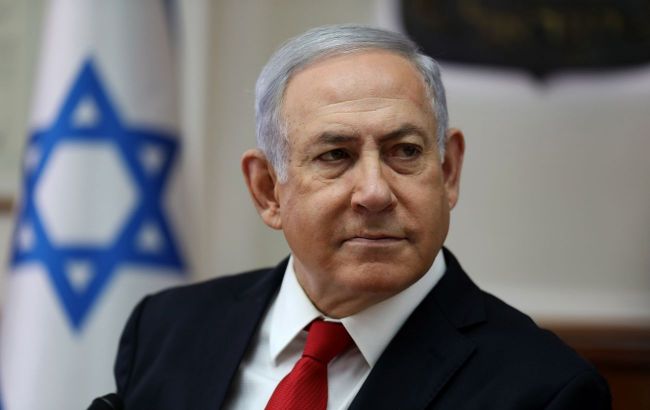Painful compromise: Why Israel and Hamas came to terms and what lies ahead
 Prime Minister of Israel Benjamin Netanyahu (photo: Getty Images)
Prime Minister of Israel Benjamin Netanyahu (photo: Getty Images)
Intense pressure from the team of future US President Donald Trump pushed Israel and Hamas to reach an agreement. For Trump's close ally, Israeli Prime Minister Benjamin Netanyahu, this became a difficult compromise.
Read more about Trump's role and how long the ceasefire can last, as well as the new challenges posed by the deal, in RBC-Ukraine's material.
Contents
- What the agreement entails
- What sparked the conflict between Hamas and Israel
- How long will the agreement last?
- Perception within Israel
Israel and the terrorist organization Hamas have reached an agreement on a hostage exchange and a ceasefire. This deal offers a chance to end the 15-month-long conflict that began with Hamas' terrorist attack on Israel and was followed by Israel's ground operation in the Gaza Strip in response to the aggression.
What the agreement entails
The agreement includes several phases. The first phase will last 42 days. Hamas is to release 33 hostages: children, women, the elderly, and the sick. On the 16th day after the agreement's implementation, and assuming the first group of hostages is released, Israel will begin negotiations for the second phase — focusing on the release of the remaining male prisoners of the conscription age.
In exchange for the hostages, the Israeli army will gradually withdraw from most of the Gaza Strip. Israel will also release a number of militants currently held in Israeli prisons. Subsequent steps include the return of the bodies of hostages and the creation of a reconstruction plan and a new governance structure for Gaza.
For more details on the agreement, read the material by RBC-Ukraine.
What sparked the conflict between Hamas and Israel
The terrorist organization Hamas seized control of the Gaza Strip in 2007, following a de facto civil war in territories controlled by the Palestinian Authority.
On October 7, 2023, Hamas launched a terrorist attack on Israel, resulting in over 1,200 deaths and the capture of hundreds of hostages.
In response, Israel initiated a military operation against Hamas in the Gaza Strip. During the conflict, Hamas militants suffered significant losses, including the destruction of their most capable units, military equipment, and infrastructure. A number of the organization’s leaders were killed, including its top leader, Yahya Sinwar.
At the same time as the military operation began, Israel began facing attacks from Iran and its allies, reportedly expressing solidarity with Hamas.
Houthi rebels from Yemen and Hezbollah from Lebanon launched rocket attacks on Israeli territory. In retaliation, Israel carried out airstrikes and, from September to November of the previous year, conducted a military operation in southern Lebanon against Hezbollah.
Throughout this period, negotiations for a ceasefire and the exchange of remaining hostages were taking place in the Qatari capital of Doha. Several times, reports indicated that an agreement was about to be reached, but each time the negotiations broke down.
How long will the agreement last?
Progress in the negotiations became possible due to a reduction in external support for Hamas, which had been provided by Iran through its network of allies, The Times of Israel reports citing Israeli officials. Specifically, this refers to the fall of the pro-Iranian regime of Bashar al-Assad in Syria and the military defeat of Hezbollah in Lebanon, carried out by the Israeli army. Hamas itself also suffered significant losses during its battles with the Israel Defense Forces (IDF) in the Gaza Strip.
Another factor that facilitated progress in the negotiations was pressure on Hamas and Israel from the elected US president, Donald Trump. It seems that this was not exactly what Israeli Prime Minister Benjamin Netanyahu expected when he bet on Trump during the US presidential elections.
Israel worked with both Biden administration representative Brett McGurk, who is leaving office, and future Trump representative Steve Witkoff. According to two Arab sources reported by Israeli media, Trump’s representative achieved more in one meeting to sway Netanyahu than Joe Biden did in an entire year.
"With this deal in place, my National Security team, through the efforts of Special Envoy to the Middle East, Steve Witkoff, will continue to work closely with Israel and our Allies to make sure Gaza NEVER again becomes a terrorist safe haven," wrote Trump on the Truth Social platform.
It is evident that, for now, the US factor, which will use various means to ensure that the parties stick to the agreement, remains crucial. In the coming months, Trump's team will have the ability to influence both Israel and Hamas.
However, in the longer term, if Hamas remains in power, the threat to Israel will not disappear. Previous experience shows that terrorists have attacked Israel every few years, received a retaliatory strike of varying intensity, and after each ceasefire, they received new donor funds from sponsors across the Middle East and rebuilt their capabilities. This scenario was witnessed in 2008, 2012, 2018, 2021, and ultimately in 2023.
As The Wall Street Journal notes, Hamas's new leader, Mohammed Sinwar, is actively working on rebuilding Hamas's capabilities. Specifically, he is focusing on recruiting a new generation of militants. Additionally, a large number of unexploded Israeli ordnance in the Gaza Strip could be turned into improvised explosive devices.
Perception within Israel
After the negotiators agreed to the deal, it still requires approval from the Israeli government. However, its terms have already caused discontent among the far-right allies of Prime Minister Benjamin Netanyahu in his coalition.
The Minister of Finance, Bezalel Smotrich, leader of the Mafdal – Religious Zionism party, has already voiced his protest, calling the agreement "a catastrophe for Israel’s national security."
The Minister of Public Security, right-wing radical Itamar Ben-Gvir from the Jewish Power party, has also strongly opposed the deal. Among other things, he threatened to resign.
"This move is our only chance to prevent (the deal's) execution, and prevent Israel's surrender to Hamas, after more than a year of bloody war," Ben-Gvir wrote on Twitter (X).
According to Haaretz, Netanyahu is trying to convince both ministers to support the agreement and remain in the coalition. The chances of this are quite high, but Smotrich has not yet given a clear response. Among other factors, this is influenced by the uncertain prospects for both far-right politicians in the event of early elections. The stakes are quite high – as the collapse of the coalition is likely to lead to Netanyahu losing his prime ministerial seat, which would, in turn, bring attention back to the criminal charges against the current Israeli prime minister. On the other hand, Netanyahu’s refusal to agree to the deal would guarantee a sharp reaction from Trump, who will officially take the presidential seat in the coming days.
On January 13, one of Israel's most influential religious leaders, Rabbi Dov Lior, called for protests against the signing of the agreement. Street protests indeed began, both in support of and against the deal. Thousands took to the streets in support of the agreement, while only hundreds protested against it.
Therefore, in the end, even if the deal with Hamas is implemented, it could create new problems for Israel, primarily exacerbating internal societal divisions (which are already under chronic stress), and potentially triggering a new phase of political chaos. However, it is clear that the pressure from the incoming Trump administration was difficult to resist. The future US leader, who will likely fail to fulfill his promise of "peace in 24 hours" for Ukraine, is certainly aiming to start his tenure with at least one foreign policy victory.
Sources: materials from The Times of Israel, BBC, Haaretz, The Wall Street Journal, statements from Israeli and American politicians.

